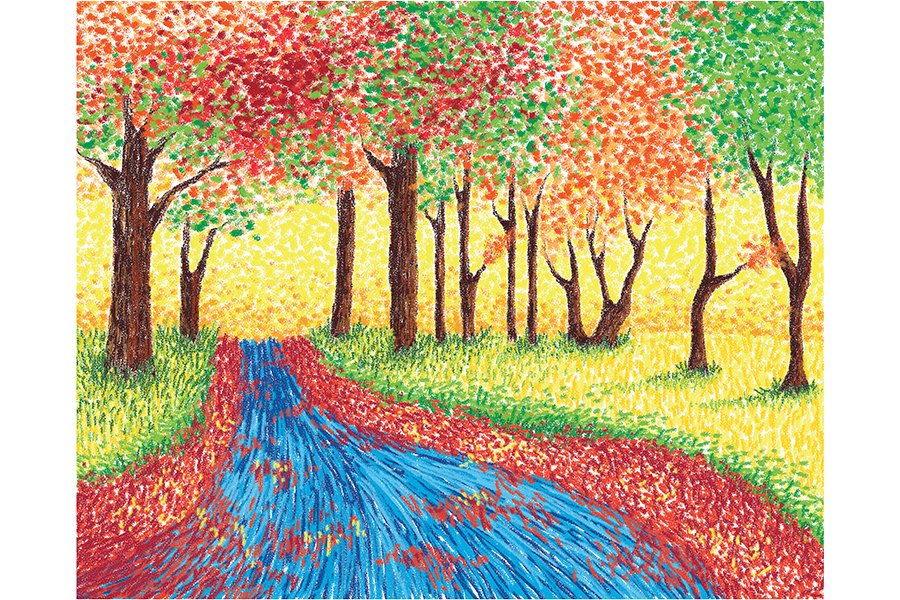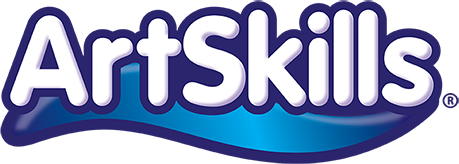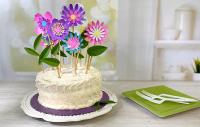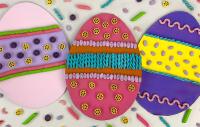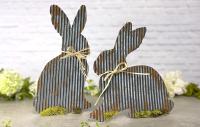Oil Pastel - Fall Landscape
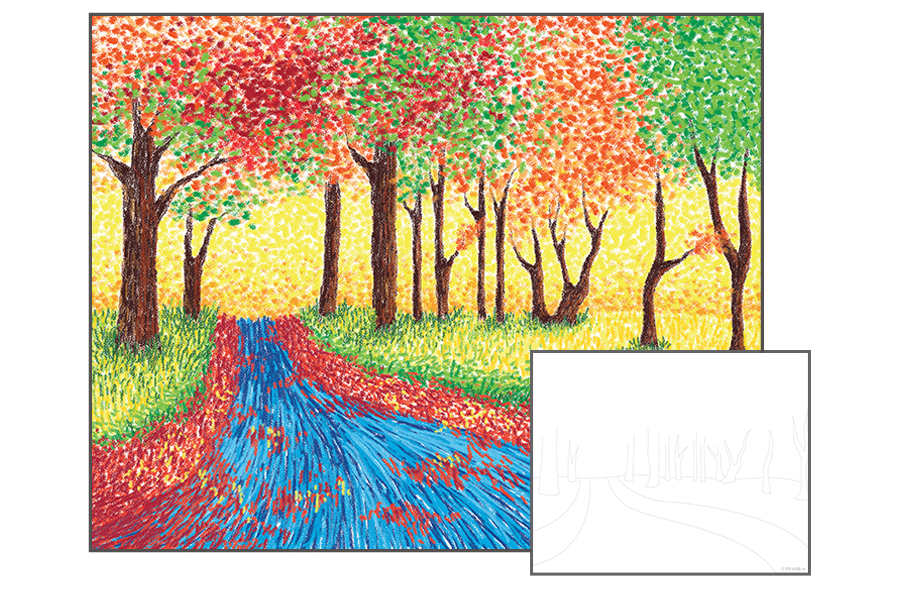
Let's Get Started!
STEP 1:
For most of your piece, you will be using the oil pastel in short strokes to build up detail. Start with Bright Blue to create the river, making dashed lines that follow the curve of the river. Dash in small lines of light brown with the side of your oil pastel to create the texture of the trees.
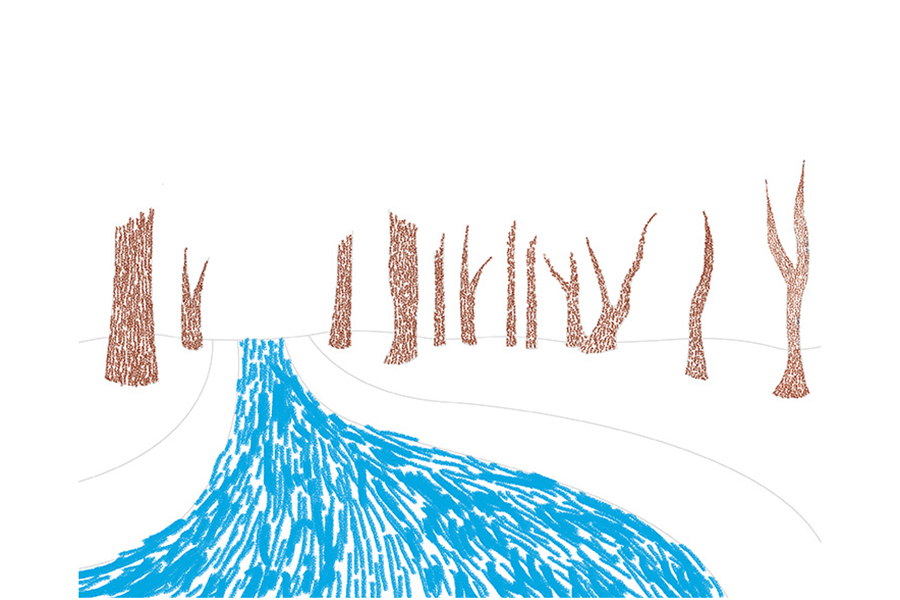

STEP 2:
Add strokes of a darker blue to give the river more depth. Add dots of yellow (“stipple”) to create the sunset sky from the horizon line to the tops of the tree trunks. Go over the trees with Dark Umber to build dimension.
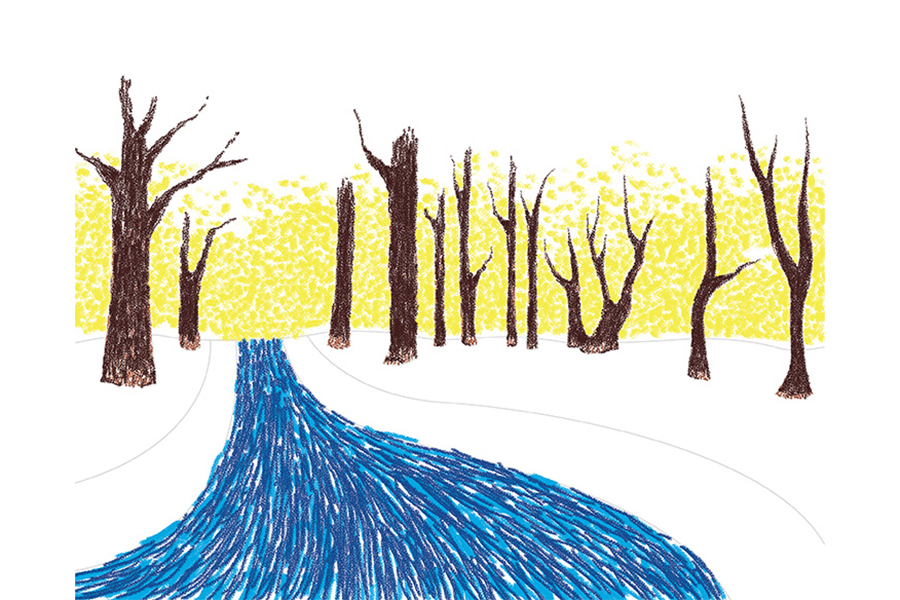

STEP 3:
A special quality to oil pastels is that you can layer dark tones over light as well as light over dark. In this step, layer a lighter orange or brown over the dark wood on one side of each tree to create your highlight. The side of the tree the light hits should be consistent. When using a lighter color over a darker pastel, it will create a natural-looking blend. Use this technique and go in with your light blue to complete the water. Take orange and fade it up from the horizon line of the sky.
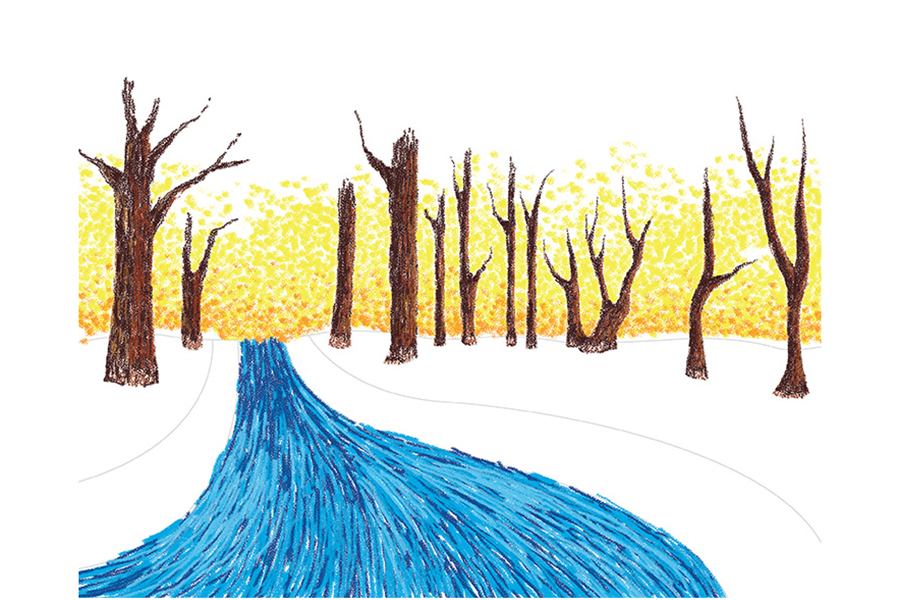

STEP 4:
Using Yellow, create the grass, stopping at the edge of the bank of the river. Create the base of a leaf-edged riverbank with your reds. With these reds, add strokes concentrated above the trunks of some of the trees to start creating your leaves. For the leaves, use smaller, dot-like strokes.
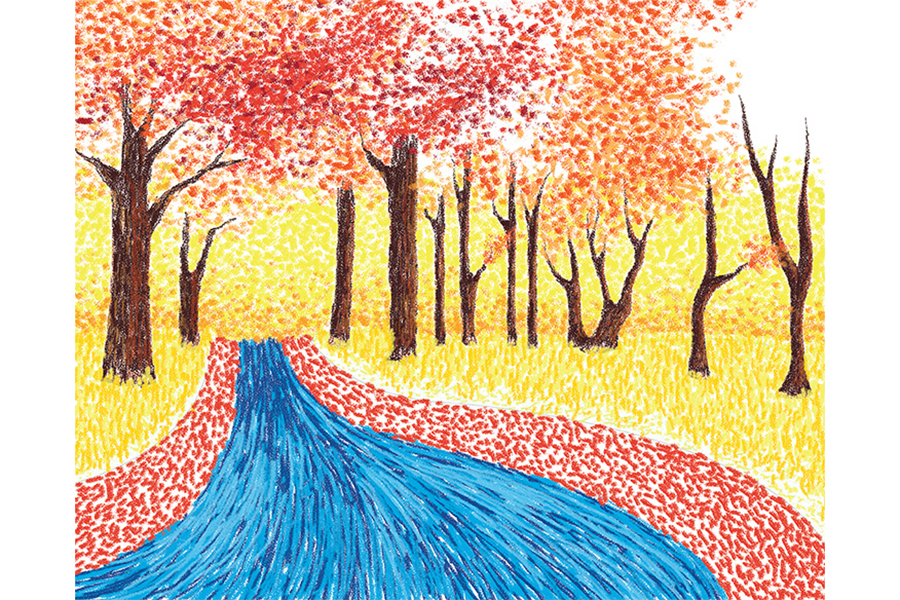

STEP 5:
Create the rest of the leaves of the trees using light and dark green, with touches of orange. Don’t be afraid to let the colors of the leaves spread and overlap. Dark green in hand, create a shadow in the grass on the opposite side of the highlights of the trees. Use the thin edge of the pastel for fine detail. Make sure your darkest green is used at the base of the tree, which is the darkest part of the shadow.
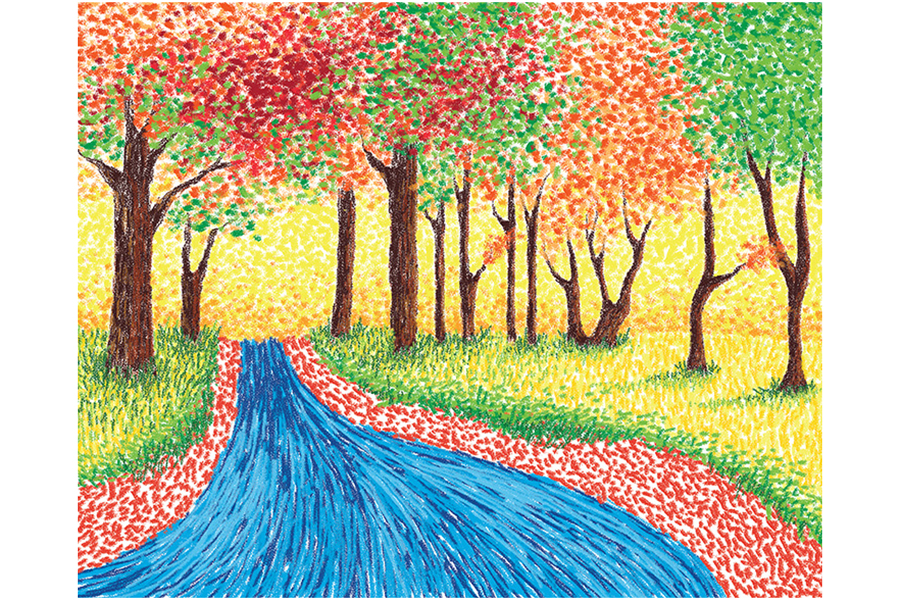

STEP 6:
Lastly, Layer yellows, oranges, and reds over the leaves of the riverbank. Using these same colors, create reflections of the trees on the surface of the water.
